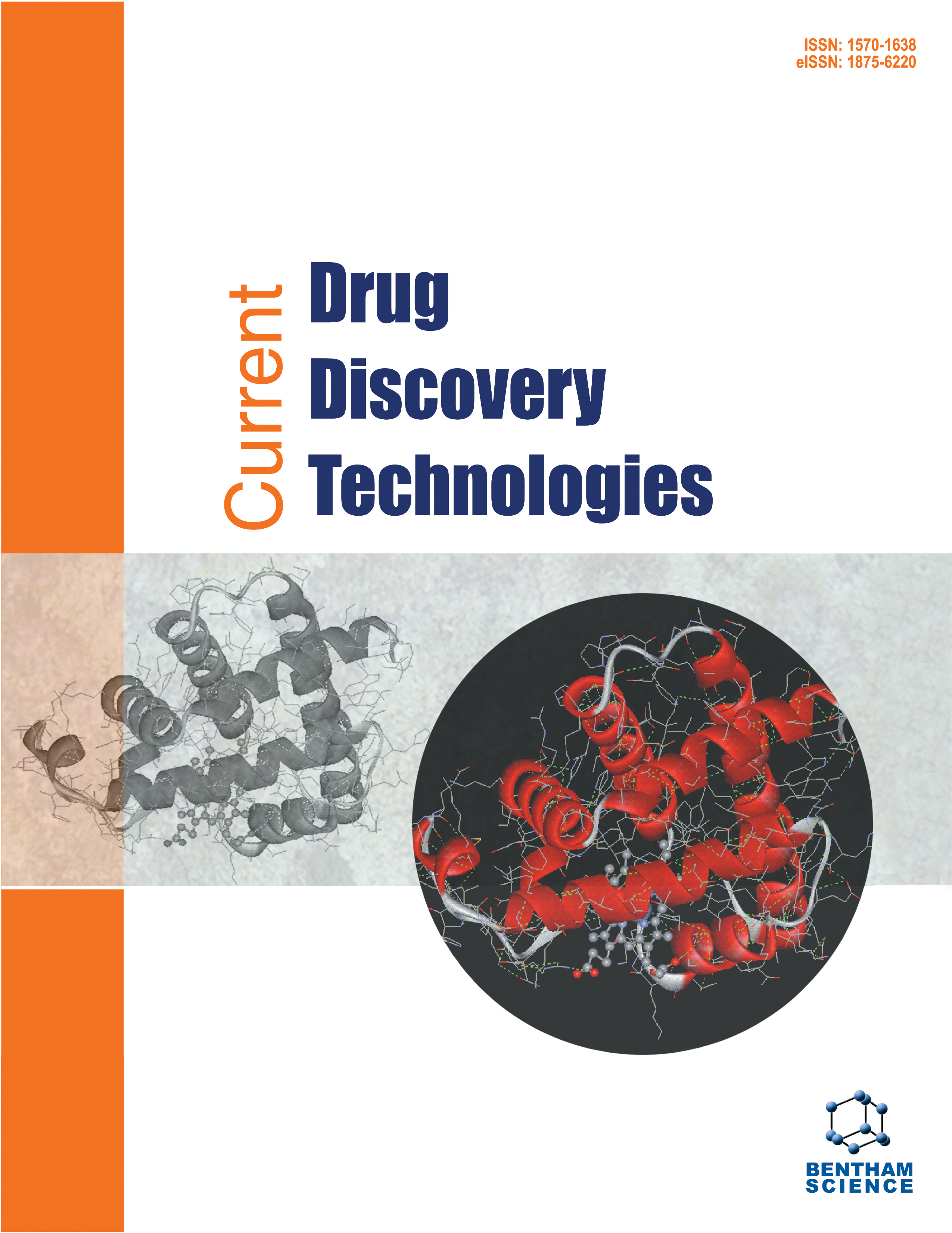- Home
- A-Z Publications
- Current Drug Discovery Technologies
- Previous Issues
- Volume 10, Issue 3, 2013
Current Drug Discovery Technologies - Volume 10, Issue 3, 2013
Volume 10, Issue 3, 2013
-
-
Age Matching Animal Models to Humans - Theoretical Considerations
More LessAuthors: Jack R. Rivers and John C. AshtonBiomedical animal models predict clinical efficacy with varying degrees of success. An important feature of in vivo modeling is matching the age of the animals used in preclinical research to the age of peak incidence for a disease state in humans. However, growth and development are highly variable between mammalian species, and age matching is always based on assumptions about the nature of development. We propose Read More
-
-
-
Network Medicine and High Throughput Screening
More LessAuthors: Robert E. Smith, Kevin Tran and Ralph H. VocqueA new paradigm is emerging in modern drug discovery. It is a fusion of traditional and modern medicine, phenotypic and targeted drug discovery, or systems and reductionist thinking. This is exemplified by using a combination of network medicine and high throughput screening. It blends the use of physiologically relevant biological systems with the high throughput and statistical robustness of modern assay technologies. The Read More
-
-
-
On the Mechanism of Action of Antipsychotic Drugs: A Chemical Reaction Not Receptor Blockade
More LessOver forty years ago, biochemist Lauro Galzigna conducted an in-vitro experiment showing that the antipsychotic chlorpromazine reacted with the putative psychotogen adrenochrome to form a polymer resembling melanin. The field of psychopharmacology has essentially ignored that simple but illustrative experiment in the intervening time. The present study reproduces principle elements of Galzigna’s experiment and expan Read More
-
-
-
Kinetic Measurement Techniques in the Evaluation of Lipid Metabolism
More LessLipid metabolism plays a critical role in health, and there are a variety of methodologies available to investigators to determine how rates of metabolic processes respond to drugs and other interventions aimed at altering lipid metabolism. Commonly the abundance of lipids in the body is measured (e.g., plasma lipoprotein concentrations), but this static measure offers only a limited view on the dynamics and complexity of Read More
-
-
-
Baicalein-Phospholipid Complex: A Novel Drug Delivery Technology for Phytotherapeutics
More LessFlavonoids are a group of low-molecular-weight polyphenolic compounds of plant origin. They exhibit a variety of biological activities such as anti-inflammatory, antioxidant, antiviral, and antitumor etc. Baicalein, is a bioactive flavone constituent of Scutellariae radix with a wide range of beneficial activities. But the poor solubility and dissolution rate limit its oral intestinal absorption and bioavailability. The aim of this study Read More
-
-
-
Long-Chain Omega-3 Fatty Acid Deficiency in Mood Disorders: Rationale for Treatment and Prevention
More LessMajor recurrent mood disorders including major depressive disorder (MDD) and bipolar disorder (BD) are associated with significant psychosocial morbidity and excess premature mortality primarily attributable to suicide and coronary heart disease. Limited efficacy and adverse side-effects associated with psychotropic medications used in the treatment of MDD and BD highlight the urgent need to develop safe and efficaciou Read More
-
-
-
Randomized Placebo-Controlled Trials of Omega-3 Polyunsaturated Fatty Acids in Psychiatric Disorders: A Review of the Current Literature
More LessA growing body of evidence suggests that omega (ω)-3 polyunsaturated fatty acids (PUFAs) are clinically useful in patients with psychiatric disorders. In the present review, we summarize the findings of randomized, placebocontrolled clinical trials that have focused on the potential therapeutic utility of ω-3 PUFAs in patients with mental illnesses. We searched the PubMed database for placebo-controlled clinical trials Read More
-
Volumes & issues
-
Volume 22 (2025)
-
Volume 21 (2024)
-
Volume 20 (2023)
-
Volume 19 (2022)
-
Volume 18 (2021)
-
Volume 17 (2020)
-
Volume 16 (2019)
-
Volume 15 (2018)
-
Volume 14 (2017)
-
Volume 13 (2016)
-
Volume 12 (2015)
-
Volume 11 (2014)
-
Volume 10 (2013)
-
Volume 9 (2012)
-
Volume 8 (2011)
-
Volume 7 (2010)
-
Volume 6 (2009)
-
Volume 5 (2008)
-
Volume 4 (2007)
-
Volume 3 (2006)
-
Volume 2 (2005)
-
Volume 1 (2004)
Most Read This Month
Article
content/journals/cddt
Journal
10
5
false
en


